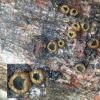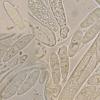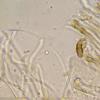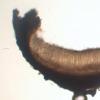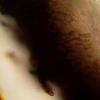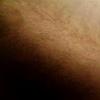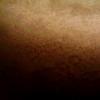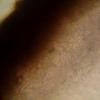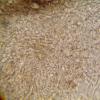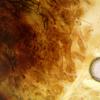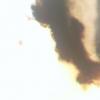
11-01-2026 20:35
Hello.A very tiny pyrenomycete sprouting sparsely

09-01-2026 17:41
Arnold BüschlenHallo, F. dilatata wird von vielen Bryoparasiten

10-01-2026 20:00
Tom SchrierHi all,We found picnidia on Protoparmeliopsis mur

07-01-2026 22:22
 Danny Newman
Danny Newman
Tatraea sp. on indet. hardwood The Swag, Great Sm

10-01-2026 01:18
 Danny Newman
Danny Newman
cf. Neovaginatispora fuckelii on indet. shrub Pre

07-01-2026 10:24
 Danny Newman
Danny Newman
Pezicula sp. on indet. hardwood Appalachian Highl

09-01-2026 10:08
 Blasco Rafael
Blasco Rafael
Hola, en el mismo habitat que la anteriorRetamaDia

08-01-2026 21:22
 Blasco Rafael
Blasco Rafael
Hola, He recogido esta muestra de Orbilia sobre Re

07-01-2026 17:29
 Marc Detollenaere
Marc Detollenaere
Dear Forum,On a barkless Populus I found some smal

10-11-2021 17:33
 Riet van Oosten
Riet van Oosten
Add-on topic http://www.ascofrance.com/forum/7059
Godronia sp.
Andgelo Mombert,
08-08-2018 19:44
 Bonsoir à tous,
Bonsoir à tous,Apothécies de 0,5-1 mm de diamètre, sur branche morte de Pinus cembra à 2100 m d'alt. (valais, Suisse).
Spores : 16-24 x 5-6 µm, elliptiques à fusiformes, triseptées déjà dans l'asque, rétrécies au niveau des cloisons, hyalines, lisses, germant facilement.
Conidies : 45-50 x 3-4 µm, courbées, aciculaires, septées, hyalines.
Asques : 100-110 x 9-10 µm, cylindriques à claviformes, inoperculés, à sommet non amyloïde, avec crochet, contenant huit spores irrégulièrement bisériées.
Paraphyses : grêles, flexueuses, septées, hyalines, larges de 2-3 µm, souvent avec le sommet élargi (4 µm), courbé et parfois avec une vacuole brunâtre.
Je pense qu'il s'agit d'un Godronia, mais avec un tel support je suis complètement perdu.
Merci d'avance !
Andgelo
Hans-Otto Baral,
08-08-2018 21:53

Re : Godronia sp.
Would be helpful to see something of the excipulum, and a section would be welcome.. Godronia has a layer of t. oblita.
Andgelo Mombert,
12-08-2018 17:49
Hans-Otto Baral,
12-08-2018 22:50

Re : Godronia sp.
Clearly no Godronia. But the last 5 pics I cannot interpret, are they upside down?
Did you check KOH for ionomidotic reaction?
Did you check KOH for ionomidotic reaction?
Andgelo Mombert,
13-08-2018 15:44

Re : Godronia sp.
Oui pour les 3 dernières photos, j'ai appuyé sur la lame.
Je testerai la réaction ce soir.
Je testerai la réaction ce soir.
Hans-Otto Baral,
13-08-2018 21:26

Re : Godronia sp.
From the last photo I cannot say if it reacted. Did reddish-brown pigment dissolve into the medium?
Andgelo Mombert,
15-08-2018 22:00

Re : Godronia sp.
Pour bien interpréter une éventuelle réaction ionomidotique, faut-il regarder à l'oeil nu ou au microscope ? La réaction doit être vérifiée sur le champignon ou dans la goutte de potasse ?
Merci d'avance.
Merci d'avance.
Hans-Otto Baral,
16-08-2018 06:29

Re : Godronia sp.
You can either put a fragment in a drop of KOH and look under the bino, or add a drop of KOH to a water mount and view under the 10x objective. But you must look the first few seconds what happens. No colour change is characteristic of the ionomidotic reaction but a dissolution of pigment (yellow, red-brown, violet) into the medium.
Andgelo Mombert,
16-08-2018 18:26

Re : Godronia sp.
OK merci !
Je vérifie.
Je vérifie.
Andgelo Mombert,
16-08-2018 20:39
Hans-Otto Baral,
16-08-2018 21:10

Re : Godronia sp.
Yes, this looks ionomidotic. Usually the brown sap stains larger regions around.
Andgelo Mombert,
16-08-2018 21:17

Re : Godronia sp.
OK !
Peut-on se diriger vers un genre ?
Andgelo
Peut-on se diriger vers un genre ?
Andgelo
Lothar Krieglsteiner,
17-08-2018 09:09

Re : Godronia sp.
maybe Ionomidotis :-)
But I do not think there is a species fitting (?)
Best, Lothar
Hans-Otto Baral,
17-08-2018 09:45

Re : Godronia sp.
Hi Lothar
it is strange but I could not find a species in my Cordieritidaceae folder that has septate spores. Except for Pseudotryblidium neesii which gets septate spores when overmature. For the moment I placed Andgelo's fungus in that genus, although here it seems to me that the spores are septate when mature (but no living asci are seen on the photos).
Zotto
it is strange but I could not find a species in my Cordieritidaceae folder that has septate spores. Except for Pseudotryblidium neesii which gets septate spores when overmature. For the moment I placed Andgelo's fungus in that genus, although here it seems to me that the spores are septate when mature (but no living asci are seen on the photos).
Zotto
Andgelo Mombert,
17-08-2018 17:47

Re : Godronia sp.
Merci à vous,
Zotto, si tu veux jeter un coup d'oeil sur la chose, ce sera un plaisir pour moi de te l'envoyer.
Andgelo
Zotto, si tu veux jeter un coup d'oeil sur la chose, ce sera un plaisir pour moi de te l'envoyer.
Andgelo
Hans-Otto Baral,
17-08-2018 18:17

Re : Godronia sp.
I don't think so, I fear I see what I need and cannot get a name for it.
But stop, now I have an idea: Gremmeniella abietina! This is a Godroniaceae with just the characters that you describe.
Could you please tell me the collection data so that i can annotate your pics properly? Andcould you please send me the macro in higher resolution?
Zotto
But stop, now I have an idea: Gremmeniella abietina! This is a Godroniaceae with just the characters that you describe.
Could you please tell me the collection data so that i can annotate your pics properly? Andcould you please send me the macro in higher resolution?
Zotto
Andgelo Mombert,
17-08-2018 18:23

Re : Godronia sp.
OK, super ! Je vais regarder si je trouve les mêmes poils.
Le 05/08/2018, sur les pentes du Gebidum (commune de Visperterminen), vers 2100 m d'altitude, sur Pinus cembra, en compagnie de Lachnellula cf. flavovirens.
Le 05/08/2018, sur les pentes du Gebidum (commune de Visperterminen), vers 2100 m d'altitude, sur Pinus cembra, en compagnie de Lachnellula cf. flavovirens.
Andgelo Mombert,
17-08-2018 19:02

Re : Godronia sp.
Que pensez-vous de la synonymie évoquée sur indexfungorum entre Gremmeniella abietina et Ascocalyx abietina ?
Hans-Otto Baral,
17-08-2018 22:02

Re : Godronia sp.
As I understand is Ascocalyx abietina a nomenclatural (obligate) synonym of G. abietina. But Ascocalyx abietis is something else.
